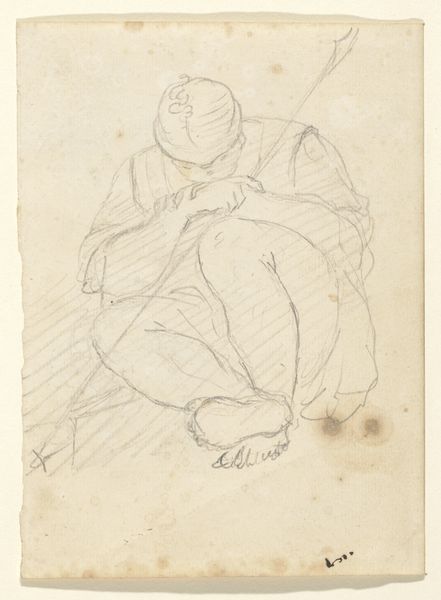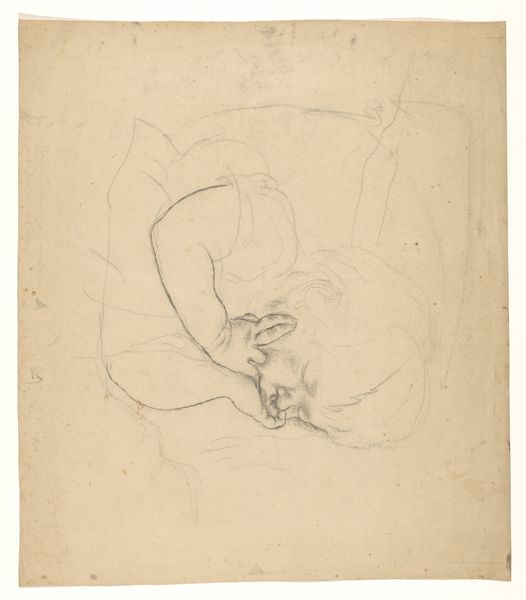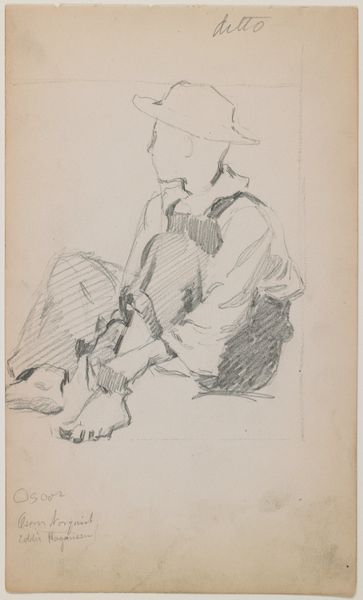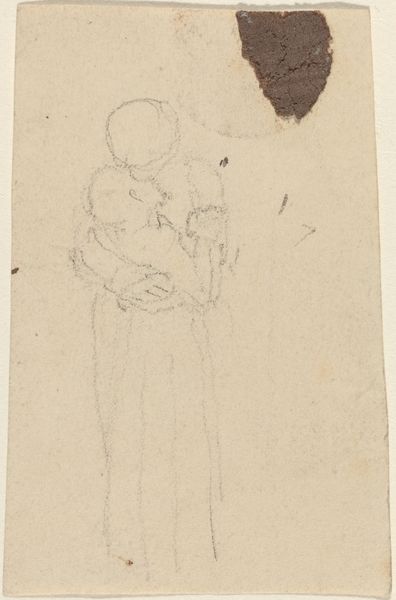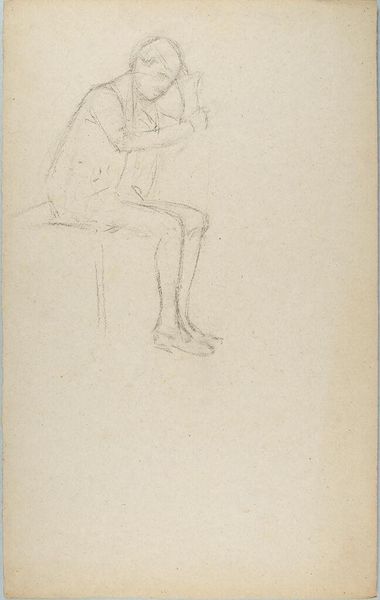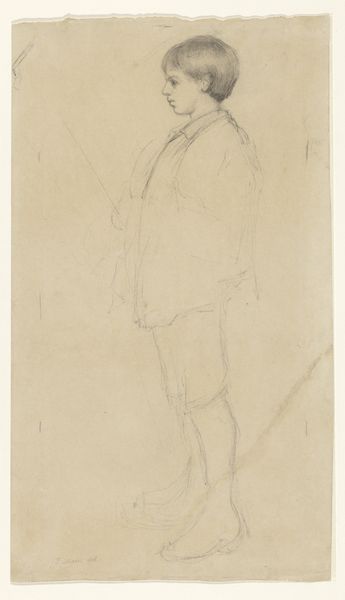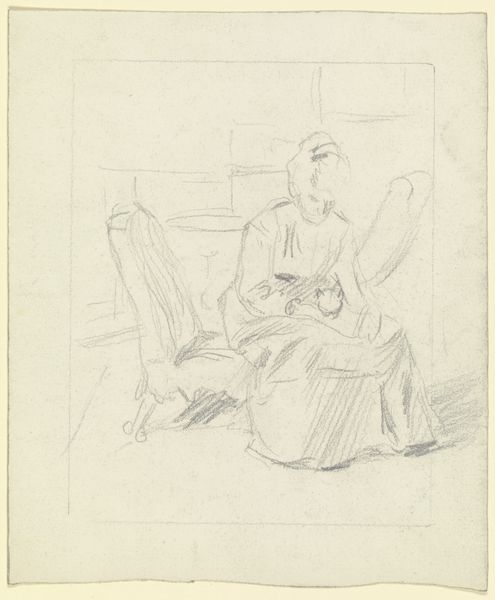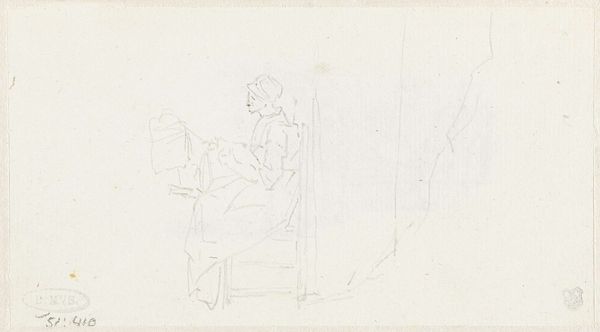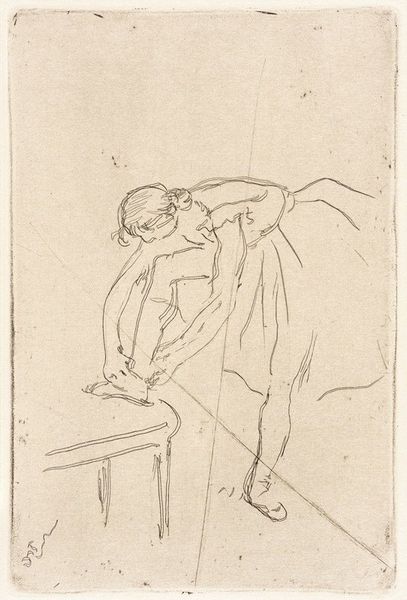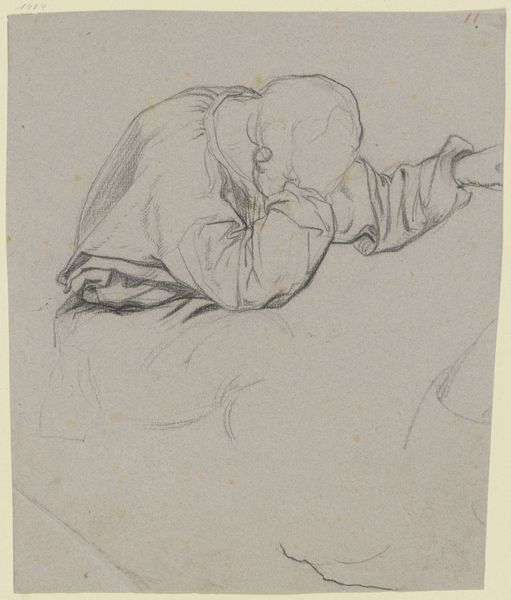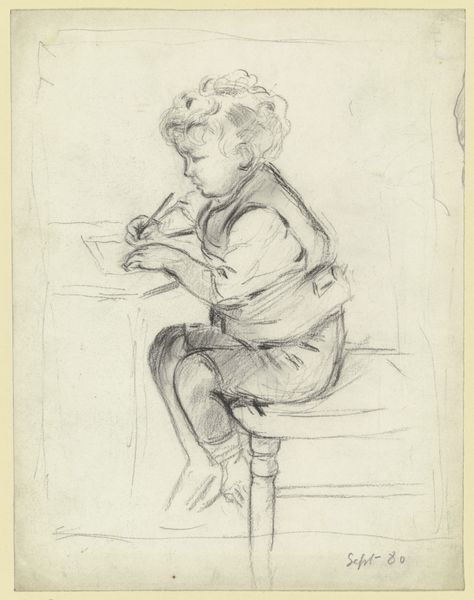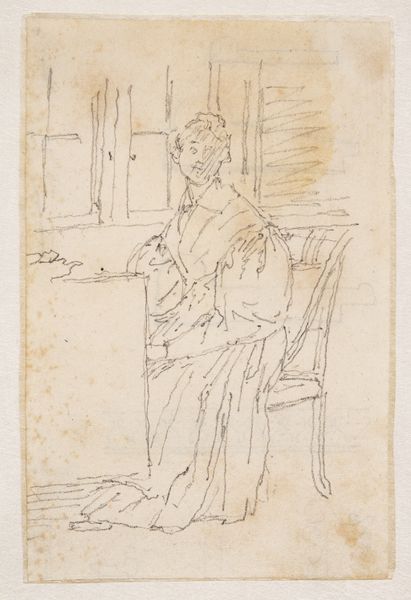
drawing, paper, pencil
#
portrait
#
drawing
#
paper
#
pencil
Copyright: Public Domain
Curator: Here we have "Der Sohn des Künstlers im Lehnstuhl," a drawing rendered with pencil on paper. It’s currently held here at the Städel Museum and is attributed to Philipp Rumpf. Editor: There's such a fleeting, almost fragile quality to it. It looks like the artist caught the child during a quiet moment, maybe a bit restless or bored. I imagine they're waiting for something to happen. Curator: That waiting, or liminal space, comes across clearly. I wonder if Rumpf intentionally channeled the archetypal image of the pensive child, burdened by premature introspection, perhaps alluding to classical representations of Melancholia? Editor: Premature introspection! I love that phrase for this sketch. His elbow perched on the chair, the small figure seems to contemplate some vastness just out of frame. The way the lines are almost unfinished adds to the sense of him being caught between thoughts. Curator: Indeed. And beyond the individual portrayed, it speaks to the universal symbolism of childhood itself – the seat representing support but also confinement; the sketchy, light quality echoing the transient nature of youth. One could even suggest the empty space above the figure is pregnant with untapped potential, or anxieties related to an undefined future. Editor: That's a fascinating point. For me, it evokes this very personal feeling of wanting to make the fleeting tangible. But look closely; it seems he can't fully solidify his idea onto the paper. He almost acknowledges the impossibility of truly capturing his son’s quiet complexity. It makes the portrait much more powerful. Curator: So it's a study, more of a sketch? You highlight the intimacy imbued by what it might lack. The use of such pale, muted pencils also makes one think about how children and youth were commonly depicted at this historical moment; even the shadows are barely there, suggesting an ephemeral nature of both childhood and visual records. Editor: Exactly! It reminds me that childhood is, by its very definition, ephemeral, and so often viewed as preparation for "something more," or at least what adults deem significant. I'm now wondering, what remains after the subject matures and after the physical drawing will fade? What cultural resonance stays, and what gets lost? Curator: Well, that is precisely the question artworks like this can continue to ask over time.
Comments
No comments
Be the first to comment and join the conversation on the ultimate creative platform.
